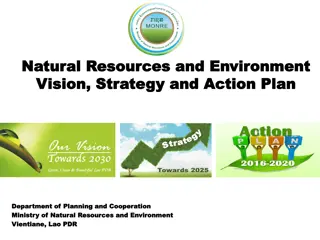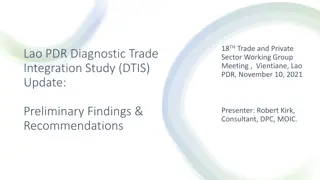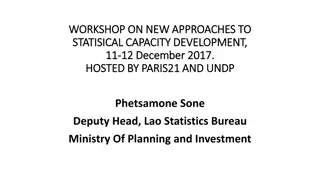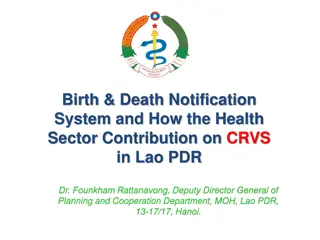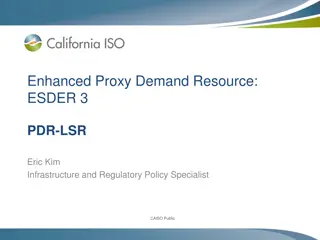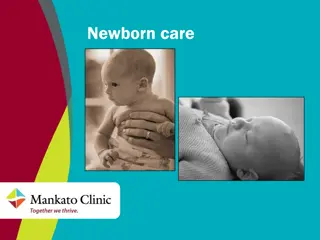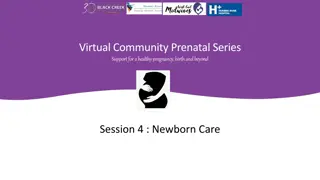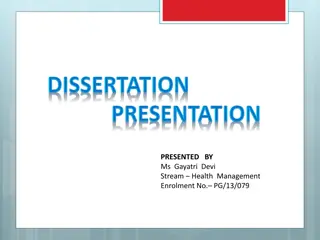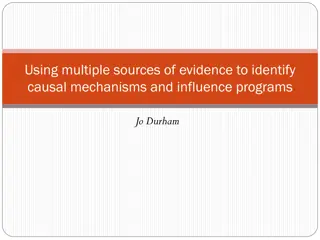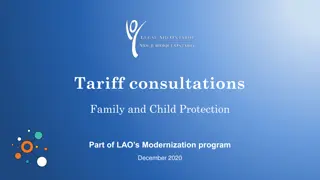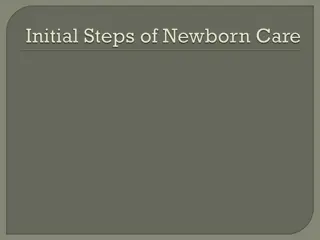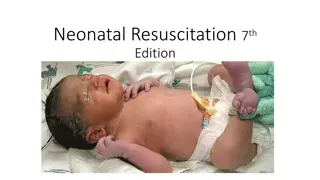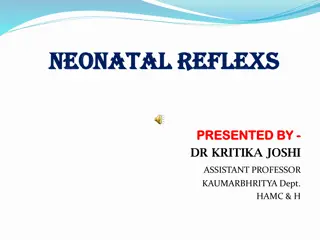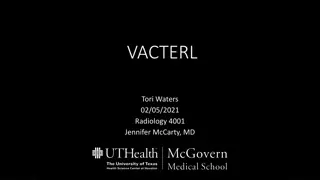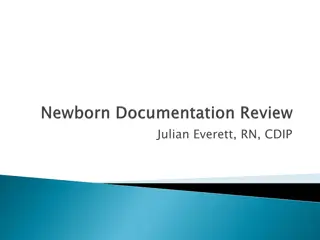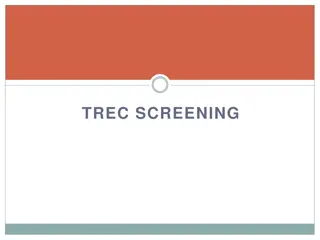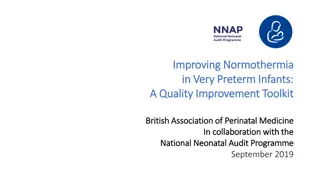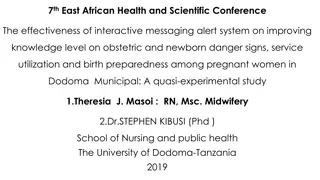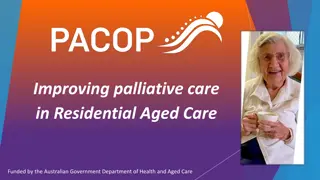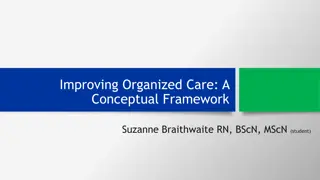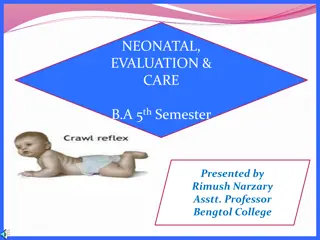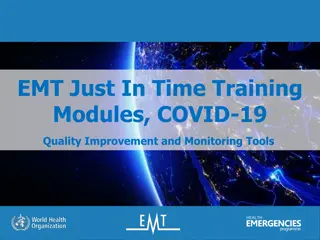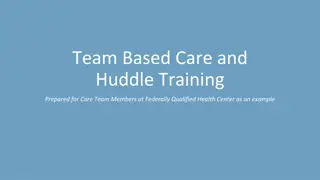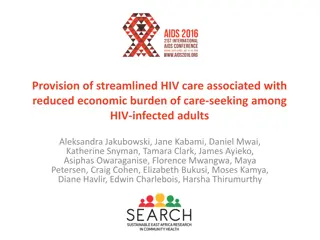Insights on Improving Newborn Care with IMNCI in Lao PDR
Under-5 mortality rates are showing improvement, yet neonatal mortality lags behind. Addressing this requires a focus on neonatal care, particularly through the implementation of IMNCI protocols. The use of IMNCI can enhance the management of sick newborns, reduce neonatal deaths, and improve overall child health outcomes by addressing key challenges in healthcare facilities, such as medication dosing, danger sign recognition, and logistical barriers to referrals. Training and support for healthcare workers are crucial for effective implementation.
Download Presentation

Please find below an Image/Link to download the presentation.
The content on the website is provided AS IS for your information and personal use only. It may not be sold, licensed, or shared on other websites without obtaining consent from the author. Download presentation by click this link. If you encounter any issues during the download, it is possible that the publisher has removed the file from their server.
E N D
Presentation Transcript
Priorities for managing sick newborns using IMNCI: Experiences from Lao PDR
The problem Under 5 mortality is improving So is neonatal mortality but not as fast
The problem Over time neonatal deaths account for a greater proportion of child deaths. If we are going to continue to improve child deaths, we must improve infant and newborn mortality
Neonatal death Neonatal death make up an increasing proportion of child deaths and require specific action EENC focuses on; Essential interventions at delivery KMC But once unwell or when presenting sick from home IMNCI is essential IMNCI for outpatients WHO Pocketbook of Hospital Care for inpatients
How can IMNCI help? During IMNCI and Pocketbook implementation many health facilities describe cases where care could be improved For example Early discharge after delivery limiting monitoring Sick infants or neonates transferred from health centre without pre-referral antibiotics Sick infants or neonates with fever and seizure being treated for seizure but not the fever Inability to refer sick neonates to provincial hospitals due to transport cost or family barriers Provision of equipment to district hospitals without training in how to use equipment or how to treat the child Lack or cost of oxygen
In the pilot of the new IMNCI coaching approach we found simple strategies can help: Many health workers (who had trained in IMCI before) could not calculate drug dose by weight Practice drills with calculations improve confidence and use How can IMNCI help? Danger signs are not routinely documented and it is not clear if they are recognised Audit of log books & feedback on what is important helps change practice
How can IMNCI help? In the implementation of WHO Pocketbook in Luang Prabang province at district hospitals many district hospital staff told us they could not always transfer sick or LBW newborns to the province, so they go home sick. Through training we built capacity To give NG feeds at the district To treat sepsis, low glucose and seizures Now we hear stories of sick newborns with these problems They are fed, kept warm, given simple antibiotics, glucose and survive
Simple treatments can make a large difference to the care of sick newborns. We have many of the tools we already need. The message Consistency is important (the same messages from IMNCI, Pocketbook, etc.)
What have other countries done? Minimal standards for neonatal care in district hospitals in PNG lowered the neonatal mortality rate by 44% 10 principles (8 of which are simple) Treating apnoea Keeping babies warm Recognising and treating hypoglycaemia Safe use of IV fluid Appropriate antibiotic use Infection control Auditing of practice (Giving oxygen and training nurses)
What have other countries done? Uganda Two-staged introduction of standards Level 1: Monthly audit and review of neonatal data Guidelines Training in recognition and immediate treatment of danger signs/sepsis Training in medication, neonatal feeds and IV fluid administration Kangaroo Care Improved infection control Neonatal mortality reduced from 48% to 40% Level 2 For specific neonatal unit (equipment and specific staff) Neonatal mortality reduced from 40 to 21%
Minimum standards set a level against which you can Measure practice Provide feedback Show improvement What is the benefit of minimum standards You are not aiming high . You are saying everyone should be able to reach this standard.
Danger signs are checked and recognised in every neonate All sick neonates receive pre-referral antibiotics Possible minimal standards; health centres Glucose is given to babies with seizures or coma Referral is made without delay All pre-referral treatment for danger signs must be available at HC
Treat any neonate with danger signs or signs of serious bacterial infection with appropriate antibiotics Give oxygen to any baby with SpO2 < 90% or clinical signs of hypoxaemia Possible minimal standards; district hospitals Keep babies warm (KMC) Detect and treat hypoglycaemia Provide NG feeds if needed (and understand safe use of IV fluid) Provide treatment to prevent apnoea in preterm babies
What more might be needed? Audit and review of practice Appropriate space Equipment Training O2 prongs and concentrators Phototherapy Nursing care for sick newborns To provide feedback To care for sick neonates (eg easy to observe, warm)
What should we expect health centres and hospitals to do if referral is not possible? Other questions What (if anything is needed) provincial and central hospitals?
Possible strategies for discussion Sick newborn module using new IMNCI approach is currently being developed For health centres Sick newborn and LBW module for Pocketbook already available For district hospitals Currently being rolled out in a bundle with rest of Pocketbook training Option is to focus on Sick Newborn module in more hospitals Need to ensure it is aligned to other standards (Essential Medicines, Facility standards for equipment and services) Could be done as research/evaluation to demonstrate impact on mortality


